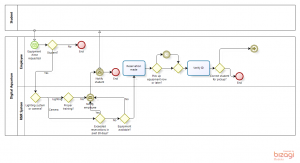
If you have not seen – ifttt.com (IFTTT = If This Then That)… check it out! It allows you to trigger tasks based events that happen all around the internet. Some of the nifty uses that my students came up with: (see more here).
- Pitch a tent before dark. Notify via SMS fifteen minutes before sunset, to know when to pitch a tent while hiking the Appalachians.
- Find a job. Notify via Email when jobs postings matching a certain criteria are posted on indeed.com
- Save your face. Upload images to dropbox of photos i’m tagged in on facebook.
- Avoid allergies. Notify via SMS if the pollen count forecast is above 9000.
- Stay Aware. Automatically add severe weather warnings from NOAA to google calendar.
This is a useful introduction to the concept of a Complex Event Processing System. IFTTT could be considered a CEP system if a combination of events could trigger a task. For example, if its between 3-6pm, AND there is an accident on the interstate, then send SMS alert. I just saw wappwolf.com which is like IFTTT for dropbox, and also exemplifies the positive externalities associated with cloudcomputing.




Recent Comments